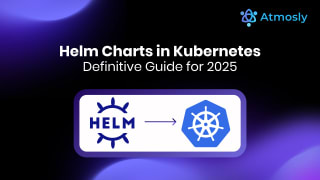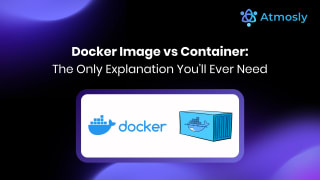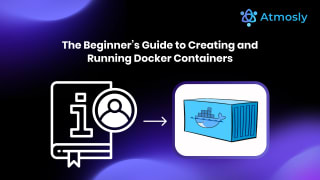In modern software delivery and business solutions, the demand for optimal performance, security, and reliability is more pressing than ever, making observability a must have for systems of all scales. To further explore how to integrate observability to ensure smooth operations and help identify issues quickly, it is necessary to understand what observability is and why it is crucial in DevOps and platform engineering.
In this article, we will embark on a journey to uncover these answers, explore their transformative power, and delve into how Atmosly is simplifying the integration of observability.
What is Observability?
Observability is akin to having a high-resolution microscope for your applications, infrastructure, and overall software delivery. This involves not just monitoring but also logging and tracing. Open-source tools like Prometheus, Grafana, and the ELK stack, as well as premium services like Datadog and New Relic, make this detailed observation possible. By integrating these observability tools with Atmosly, Dev & SRE teams get deep insights into the performance reliability of their software or services.
Users can integrate various observability tools with Atmosly to analyze, but not limited to the following;
- Metrics: Metrics act as the vital signs of your applications, measuring their performance and functionality. They provide quantifiable data such as response times, error rates, and resource utilization, offering a real-time pulse check for your system's health.
- Logs: Logs serve as your applications' diaries, recording every event and interaction, from user actions to system processes. When issues arise, logs are your go-to source for retracing steps and understanding what went wrong.
- Traces: Traces act as digital breadcrumbs, marking the journey of each transaction or request within your application. This breadcrumb trail helps you uncover bottlenecks and inefficiencies, enabling you to ensure that every user's experience is top-notch.
- Alerts: Alerts are your digital guardians, watching over your applications metrics. They notify you when unusual spikes, critical errors, or performance drops occur, serving as your proactive eyes, ensuring you're aware of issues as they unfold.

Why Observability Matters in Modern Businesses
The challenges businesses face today are as dynamic as the digital world itself. Applications are no longer monolithic, but more of microservice architecture which is distributed and diverse. Infrastructure scales dynamically across various environments. Here's why observability is essential:
- Automated Systems: With automation becoming the backbone of modern operations, understanding the inner workings of these automated processes is crucial. Observability allows you to ensure that your automated systems are running as intended, identify inefficiencies, and optimize performance.
- Complexity: Modern applications are intricate ecosystems, and managing their performance can be challenging, given their distributed and diverse nature.
- Need for Speed: In today's 24/7 world, downtime is costly, and businesses must identify and resolve issues rapidly to meet customer expectations.
- Proactive Performance: Observability isn't just about fixing issues; it's about foreseeing them. It empowers businesses to stay ahead, pinpoint bottlenecks, and optimize their systems.
- Self-Services: In the era of self-service platforms, end-users require seamless experiences. Observability ensures that self-service functionalities are consistently available, perform efficiently, and meet user expectations.
- Security: Security breaches can be catastrophic. Full observability is a powerful ally in identifying and mitigating security threats. By continuously monitoring your applications, you can proactively protect your digital assets.
Atmosly: The Path to Observability
Now, you might wonder, How can we make observability a reality in this complex digital landscape? That's where Atmosly comes in. Atmosly is a DevOps automation platform designed to empower businesses in their journey to achieving observability.
Atmosly simplifies the complexity of platform engineering by seamlessly integrating observability tools such as Prometheus, Grafana, Elasticsearch, and more. Atmosly provides unparalleled transparency into your software applications, equipping your developers and SRE team to address challenges proactively and ensuring that your applications not only remain operational but also operate at peak performance.
Atmosly offers out-of-the-box integration with the most popular open-source tools, making the journey from installation to monitoring and application log management hassle-free. However, operating these tools can pose challenges, especially when it comes to data management, dashboard creation, and scalability—all critical for any SRE (Site Reliability Engineering) team. With Atmosly, these features are built-in and managed from day one, empowering your team with the right tools for faster debugging and operational excellence.
By embracing a comprehensive approach to observability and automation, Atmosly enables you to streamline operations, enhance performance, and provide the best possible experiences for your users.
Conclusion
In the fast-paced world of DevOps and platform engineering, achieving true observability is more than a milestone—it's a game-changer. This level of insight enables you to master complexity, automate processes confidently, build reliable products and services, and spot potential issues before they escalate.
Atmosly serves as a guiding light on this transformative path. Offering out-of-the-box integration with popular open-source tools and built-in features for data management, dashboard creation, and scalability, Atmosly provides a strong foundation for operational excellence. While Atmosly may be your navigational compass, remember that the quest for full observability and operational efficiency is a collective industry effort.
Let's move forward together, embrace the challenges, and unlock the power of observability in the ever-evolving digital world.






